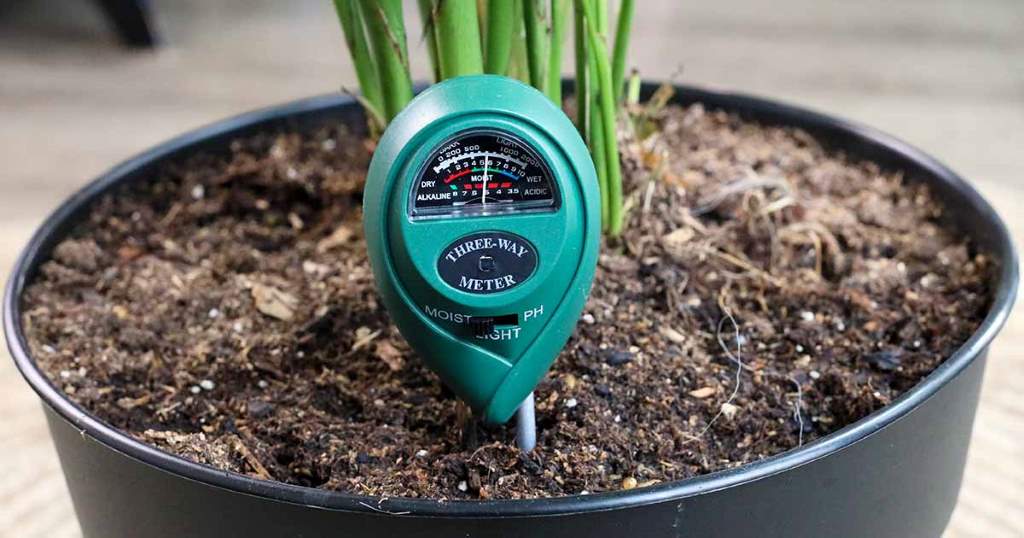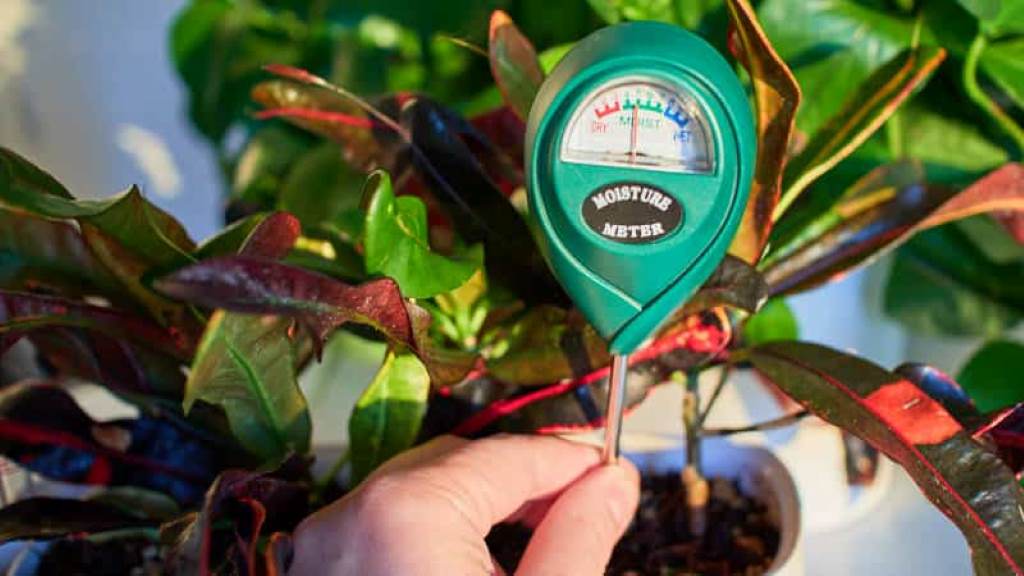Using a Soil Moisture Meter to Perfect Your Watering Schedule

Maintaining a healthy lawn or garden requires precise watering, especially in regions with unique climate challenges like California. Overwatering or underwatering can harm plants, waste resources, and increase maintenance costs. A soil moisture meter is a simple yet effective tool to help you optimize your watering schedule, ensuring plants thrive while conserving water. At Boyers Lawn Care, experts emphasize the importance of tailored watering practices to keep landscapes vibrant and sustainable, particularly during demanding seasons.
Why Soil Moisture Matters in California Summers
California’s summer climate, characterized by intense heat and minimal rainfall, demands careful water management. Soil moisture levels directly impact plant health, as they determine how much water roots can access. Too much water can lead to root rot, while too little can cause wilting or stunted growth. For those wondering what to put on your lawn California summer, understanding soil moisture is key to choosing the right fertilizers, schedules, and maintenance practices to keep your lawn lush.
What Is a Soil Moisture Meter?
A soil moisture meter is a device that measures the water content in soil, typically through a probe inserted into the ground. These tools provide instant readings, often on a scale from dry to wet, helping you decide when to water. Meters range from basic analog models to advanced digital versions with additional features like pH or light measurement. According to the University of California Agriculture and Natural Resources, using such tools can improve irrigation efficiency, especially in drought-prone areas.
Benefits of Using a Soil Moisture Meter
Using a soil moisture meter offers several advantages for gardeners and homeowners:
- Prevents Overwatering: Excess water can suffocate roots and promote fungal diseases. A meter ensures you only water when necessary.
- Conserves Water: By watering only when soil is dry, you reduce waste, which is critical in water-scarce regions like California.
- Improves Plant Health: Consistent moisture levels support robust root systems and vibrant growth.
- Saves Time and Money: Precise watering reduces utility bills and minimizes plant replacement costs.
- Simplifies Decision-Making: Meters eliminate guesswork, making it easier for beginners to maintain healthy landscapes.
These benefits make soil moisture meters an essential tool for sustainable gardening, particularly during California’s dry summers.

How to Use a Soil Moisture Meter Effectively
To get accurate results and optimize your watering schedule, follow these steps:
- Choose the Right Meter: Select a meter suited to your needs. Basic models are affordable and effective for most home gardens, while advanced models may offer additional data like soil pH.
- Insert the Probe Correctly: Push the probe 4-6 inches into the soil near the plant’s root zone. Avoid rocks or hard soil, which can damage the probe or skew readings.
- Take Multiple Readings: Test several spots around the plant to account for variations in soil moisture. This ensures a comprehensive understanding of the area’s needs.
- Interpret the Results: Most meters display a scale (e.g., 1-10 or dry/moist/wet). Refer to your plant’s specific water requirements to decide whether to water.
- Water Accordingly: If the soil is too dry, water deeply but infrequently to encourage strong roots. If it’s too wet, delay watering to prevent root damage.
For best results, test soil in the morning when temperatures are cooler, and avoid testing immediately after watering, as this can give misleading readings.
Tailoring Your Watering Schedule with a Soil Moisture Meter
Once you have your meter readings, you can create a customized watering schedule. Different plants have unique moisture needs, so consider these factors:
- Plant Type: Lawns, succulents, and vegetables require different watering frequencies. For example, cool-season grasses common in California lawns need consistent moisture, while drought-tolerant natives thrive with less.
- Soil Type: Sandy soils drain quickly and may need more frequent watering, while clay soils retain moisture longer. A meter helps you adjust for these differences.
- Weather Conditions: Hot, windy days increase evaporation, necessitating more frequent checks. Conversely, cooler or humid days may require less watering.
- Seasonal Changes: In California, summer heat demands more attention to moisture levels, while winter may require minimal irrigation.
By regularly checking soil moisture, you can adjust your schedule weekly or even daily during extreme heat. For instance, a reading indicating dry soil for your lawn might prompt a deep watering session every 3-4 days, while a consistently moist reading could mean you skip watering altogether.
Common Mistakes to Avoid
While soil moisture meters are user-friendly, certain errors can reduce their effectiveness:
- Not Calibrating the Meter: Some digital meters require calibration for accurate readings. Follow the manufacturer’s instructions to ensure reliability.
- Testing at the Wrong Depth: Shallow readings may not reflect the root zone’s true moisture level. Always insert the probe deep enough.
- Ignoring Plant Needs: A meter provides data, but you must interpret it based on your plants’ specific requirements. For example, cacti need drier conditions than roses.
- Neglecting Maintenance: Clean the probe after each use to prevent contamination and ensure accurate readings over time.
Avoiding these pitfalls will help you maximize the meter’s benefits and maintain a healthy landscape. Discover How to Sharpen Lawn Mower Blades at Home: Easy Steps for a Cleaner Cut.
Integrating Soil Moisture Data into California Lawn Care
In California, where water conservation is critical, a soil moisture meter can align your watering practices with sustainable goals. The California Department of Water Resources recommends efficient irrigation to reduce waste, especially during summer droughts. By using a meter, you can ensure your lawn receives just the right amount of water, complementing other summer care practices like proper mowing and fertilization. This approach not only keeps your lawn green but also supports environmental stewardship.
Moreover, soil moisture meters are versatile tools for various landscapes, from lawns to vegetable gardens to ornamental beds. They empower you to make informed decisions, reducing the risk of overwatering or neglecting plants during heatwaves. For California homeowners, this precision is invaluable for maintaining vibrant yards while adhering to water restrictions.
FAQs
How often should I use a soil moisture meter?
Check soil moisture every 2-3 days during hot summer months or when establishing new plants. For established lawns or gardens, weekly checks are usually sufficient, adjusting based on weather and plant needs.
Can a soil moisture meter work for all types of plants?
Yes, but you must interpret readings based on each plant’s moisture requirements. For example, succulents tolerate drier soil, while vegetables may need consistently moist conditions.
Are digital soil moisture meters better than analog ones?
Digital meters often provide more precise readings and additional features like pH measurement, but analog meters are reliable for basic moisture checks and are typically more affordable.
What should I do if my soil is always too wet?
If readings consistently show wet soil, improve drainage by aerating the soil or adding organic matter. Reduce watering frequency and ensure your irrigation system isn’t overapplying water.
Can I use a soil moisture meter in containers or raised beds?
Absolutely. Soil moisture meters work well in containers and raised beds, helping you monitor moisture levels in confined spaces where overwatering is a common issue.
Conclusion
A soil moisture meter is a game-changer for perfecting your watering schedule, especially in California’s challenging summer climate. By providing accurate data on soil moisture, this tool helps you avoid overwatering, conserve resources, and promote healthier plants. Whether you’re maintaining a lush lawn or a vibrant garden, integrating a soil moisture meter into your routine ensures precision and sustainability. Start using one today to take the guesswork out of watering and enjoy a thriving landscape all season long.








